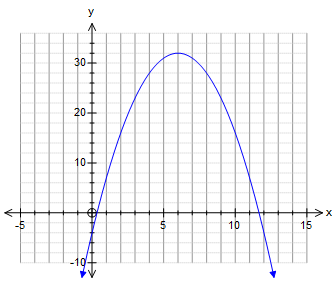Standard form: #y=ax^2+bx_c=0 color(white)(....)#Where
#x=(-b+-sqrt(b^2-4ac))/(2a)#
#a=-1#
#b=12#
#c=-4#
#color(blue)(~~~~~~~~~~~~ " Short Cut " ~~~~~~~~~~~~)#
#color(brown)("Change into format of " y= ax^2+bx+c " into:")#
#color(brown)(y=a(x^2 +b/ax+c/a) color(white)(xxx) ->color(white)(.....) (-1)(x^2-12x+4))#
#color(blue)("THE TRICK!")# # color(white)(....)color(green)(x_("vertex")= (-1/2) (b/a) = (-1/2)(-12)=+6)#
#color(blue)(~~~~~~~~~~~~~~~~~~~~~~~~~~~~~~~~~~)#
#color(red)(" To demonstrate the point - 'The long way round !'")#
The factors of 4 will not produce the sum of 12 so use the formula
The vertex #x# will be the mean of the two #x's# that are a solution the standard form
#a=-1#
#b=12#
#c=-4#
Thus
#x= (-(12)+-sqrt(12^2-(4)(-1)(-4)))/(2(-1))#
#x=+6+-(sqrt(144-16))/(-2)#
#x= + 6 +- (sqrt(128))/(-2)#
#x= 6 +- (sqrt(2xx64))/(-2)#
#x= 6 +- (8sqrt(2))/(-2)#
#x= 6 +- (-4sqrt(2))#

The mean point is:
#x_("vertex")= ((6-4sqrt(2)) +(6+4sqrt(2)))/2 =6#
Substitute #x_("vertex")=6# into the original equation to find the value of #y_("vertex")#

